Testimonials
(Images at right will open in a new Tab. If images won't open check your browser settings
or right click and "Open in a new tab" or "Open in a new window")
|
Before
|
asd
|
Afteraaaa
|
I work with high powered lasers for entertainment purposes. We use your product to clean aperture glass and scanner mirrors in our equipment.
We use high powered 20-36 watt lasers so if any dust, or oil & dust, ends up in the laser path it can fuse and destroy the glass (and ruin the laser show).
Very useful product! Everyone I know in the laser industry uses your product.
Adam LaBay
http://fwlasers.com/
|
|
|
|
I work for a major microscope and optics manufacturer, and I love First Contact - it has become an essential and irreplaceable tool that I need to do my job. I use it to clean our demo equipment after transport and
remove the dust/debris microscope customers creatively get on their optics. First Contact is our best kept industry secret to restore optics and camera sensors so they keep producing their best images.
Anthony D. Vetter, PhD
Advanced Imaging Specialist
Nikon Instruments Inc.
|
|
|
|
2018 photos showing First Contact Polymer cleaning of the 1M telescope mirror at the Cerro Tololo Observatory in Chile. Removing Water spots were the primary purpose as the mirror was pretty clean. The water spot remover for
the 1M was used and we only needed one application. I also have had instances where multiple coats of water spot remover and polymer are needed to remove pesky water spots, or heavier debris (bird droppings) from mirrors.
Brook Taylor
Photos courtesy of Las Cumbres Observatory.
http://lco.global
|
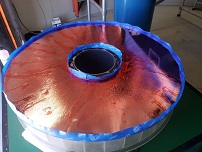
|
|
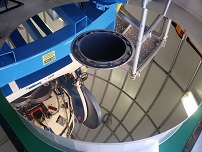
|
I have cleaned objectives before using more traditional methods (blower bulb, brush, liquid & cloth) when absolutely necessary without incident, but I know that even the most careful tactile cleaning can leave micro-scratches on the coatings. Then I saw someone
discussing your product on Cloudy Nights and decided to give it a try. I watched your instruction videos on application and precautions prior to purchasing. I am only cleaning the outer lens of each objective, but got a few spare o-rings just in case. I appreciate you
making sure I’m all set to apply the product.
I just wanted to let you know how impressed I am with this cleaning system and to thank you for giving the amateur (as well as the professional) astronomical community such a great alternative to the traditionally more hazardous form of cleaning optics using
cleaning solution and direct contact with a lens cloth or optical tissue. Following your very informative instructional videos and tips, I cleaned both the 80mm and 102mm refractors with outstanding results. After letting the solution dry sufficiently while they sa
t vertically on an altazimuth mount, I was able to cleanly peel the polymer layer off, revealing a renewed lens free of dust and smudges. They look as good as new and all without the worry of possibly scratching or eroding the multi-coatings. I will likely order some
additional 127mm o-rings down the road for a premium triplet apo I have for when the time comes the objective is due a cleaning. Anyway, thanks again and your product is now my new go-to for telescope objective cleaning!
Thank you for the great product and reaching out to offer assistance and/or answer questions! It’s always nice to deal with a company that follows up to make sure I have what I need and am properly prepared.
Mark B - CA USA
|
|
|
|
Your product was first introduced to me through your company's presentation on YouTube’s “The Astro Imaging Channel” (August 2021). It was a very impressive demonstration that persuaded me to try your product. At the time my optics (150mm Newtonian Astrograph, CMOS camera and various lenses) were in reasonably good condition. Since that presentation my optics have acquired a fair amount of surface grit, water spots and a partial fingerprint on my camera.
Your product is fantastic! (here are Before and After mirror images). The polymer solution was also used on my CMOS camera, filters and telescope correcting lens - with the same great results. The only issue I encountered was that some of the solution penetrated beyond the O ring on the corrector lens. This made it harder to remove the dried film in those areas (minor issue). I did not have before/after pictures of the camera. The glass plate over the lens was actually pretty clean. One of my filters had a partial fingerprint on it. The polymer solution removed it completely. I should of done before/after on that filter for you.
The end result is much better Astrophotography products. I don't have any empirical data but it takes less imaging time to achieve the same results than before the cleaning.
David B. - Livingston, TX USA
|
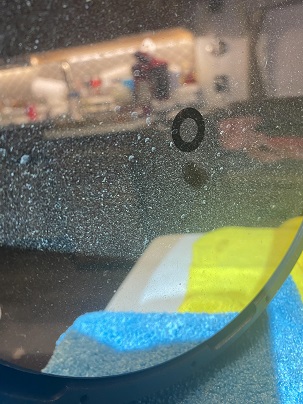 |
|
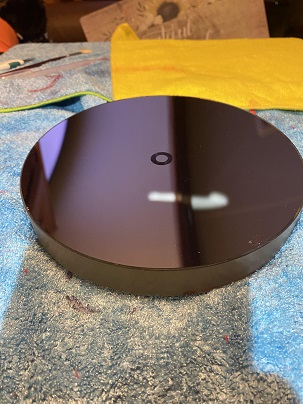 |
I have attached a before and after from my last run. Here are some testimonials from me you can use anyway you see fit. This stuff removes spider webs like magic, wow
! Dust, its outta here! Pollen, Cya later! Water spots or
bug deposits need pre-treatment first. Easy to use. Works as advertised. I love the stuff, smells great! Will use it again and again. The Red poly is much better visually than the clear and helps to see the little pieces that can be
left behind on the edges.
- James, AZ, USA
|
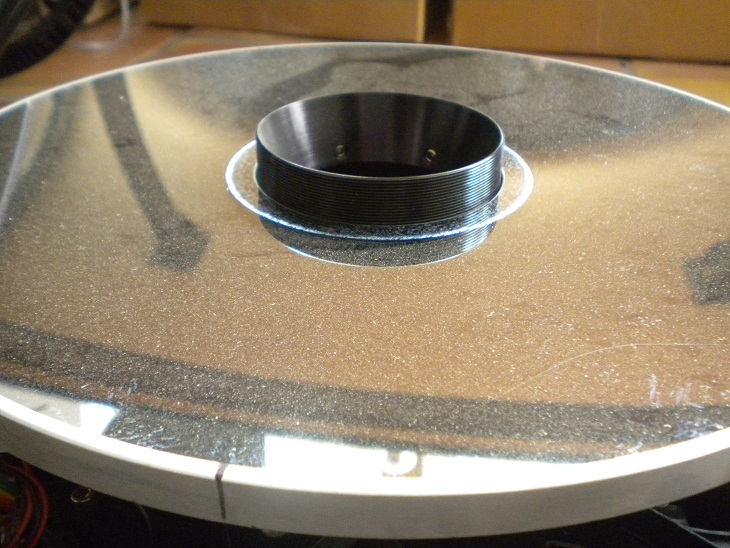
|
|
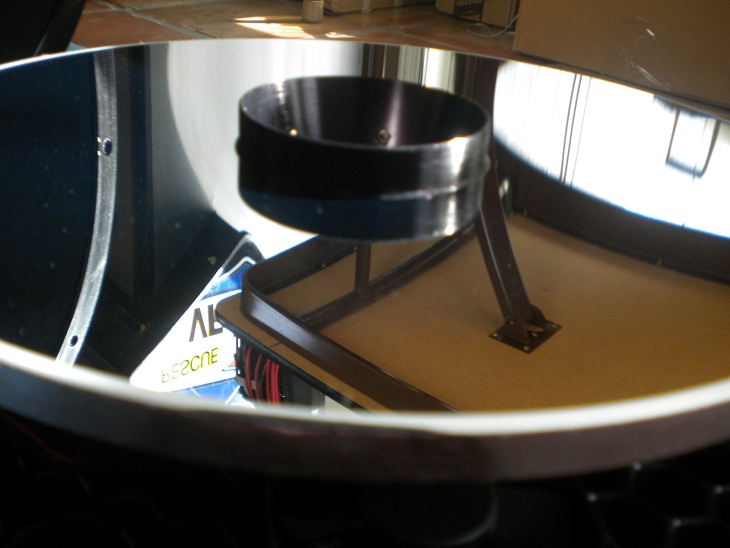
|
I’ve finally had a chance to use First Contact on the SPIRIT II telescope optics here at UWA, (clickable link) and wanted to convey my satisfaction. The product really does ‘work as advertised’ and was easy to use following
your detailed instructions. Telescope optics, in particular, tend to include water soluble particles in the mix with dust, and my next cleaning will likely include a water pre-soak as outlined in your literature. Despite this, the results
are quite spectacular on both mirror and lens surfaces.
- Paul, Univ. of Western Australia
|

|
|
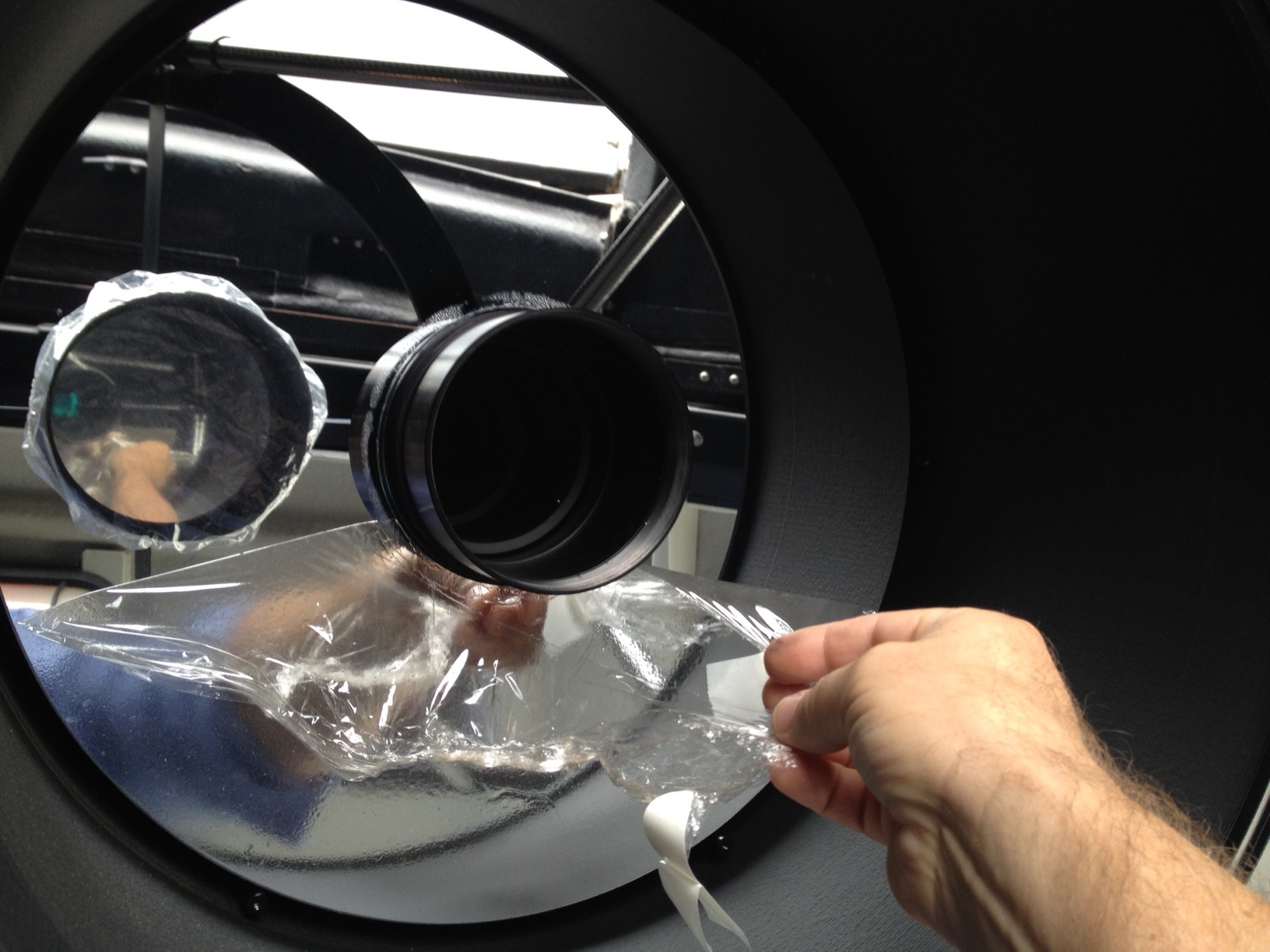
|
I am writing to update you on my experience using First Contact on my C9.25 SCT telescope. First off, let me say that it was an overwhelming success! My corrector plate's front surface looks nearly pristine, a far cry from what
5 years of Sarharan dust and pollen accumulation had it looking like just a few days ago. My reaction to peeling off the layer (of dry polymer) and seeing what lay beneath was a loud WOW!, a clear indicator of the amazing effect
of the polymer's performance! I would highly recommend this product to any amateur astronomer who wants a safe way to extract dirt, grime and particles off of their optics. Please consider me a very happy customer and I would
love to provide feedback to anyone considering this product as a reference. I will certainly do my part in spreading the word in my local community about it. Also, may I say your packaging, documentation and support are first rate,
thank you so much!
Agapios Elia
Nicosia, Cyprus
|
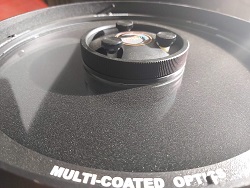
|
|
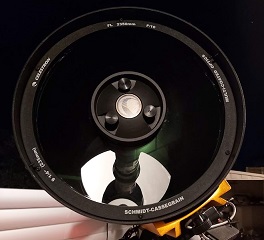
|
I'm delighted with the results. Now, if I would just have read the directions the first time! I've included a couple pictures - the first shows the gunk on the lens before cleaning. The second shows the lens about a week after cleaning.
Awesome! Please note that I processed both the before and after pictures to bring out the dust as best I could. (The few spots of dust in the "after" picture are due to the fact that waited over a week after cleaning to take it- so a little
dust had settled back on the lens, and I processed the picture to make that dust as visible as possible in the photo.) You may use these photos as you wish. And the most important thing I learned- if it doesn't work the first time,
read the instructions and try again :)
- Craig, USA
|
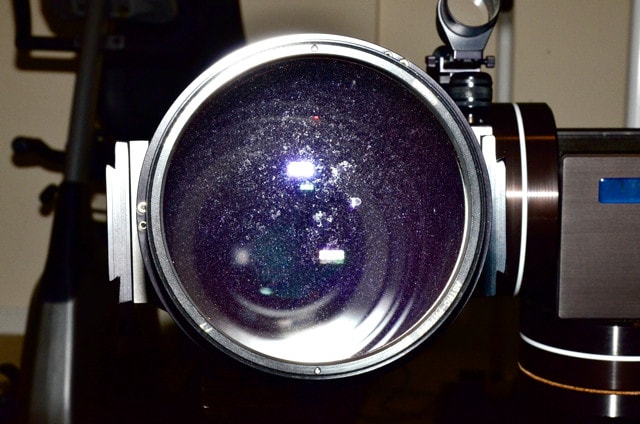
|
|
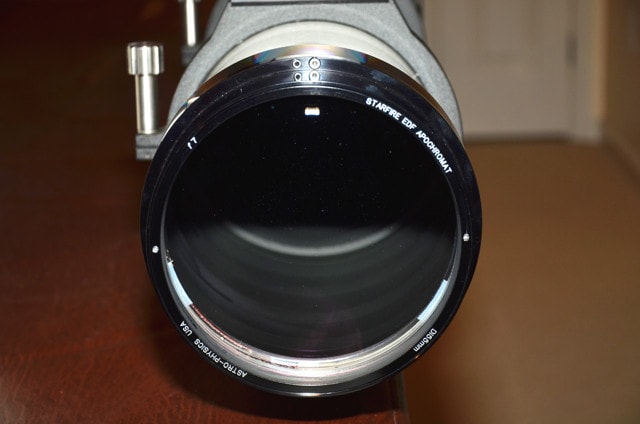
|
I have an Obsession 18 Classic I wanted to get in tip top shape. I’ve used your product once before perhaps around 2010. (I used First Contact and) The
results were amazing and it’s likely I’ll never use anything else on expensive first surface optics. Some may think your product expensive but weigh that against the opportunity for disaster handling 65 lbs. of Pyrex or the cost of shipping and coating the mirror. In my opinion, anyone that would take their mirror out and use detergent, water and cotton on first surfaces is nuts. Here's a link to my removal video: Obsession Mirror Cleaning. (PCT Note: While Chris' removal technique worked, it is not the suggested method as it creates tension at the substrate interface. PCT's suggested removal
technique is to peel the dry polymer film as described in product instructions.) I did my mirror on Friday and it came out as beautiful as expected. It looks like the day I received it from Obsession Telescopes!
30 minutes of prep and application, let dry a few hours with some air moving over it and finished in 3 minutes.
-Chris W. Twin Falls, ID USA
|
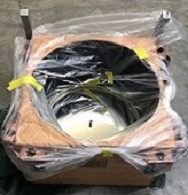
|
|
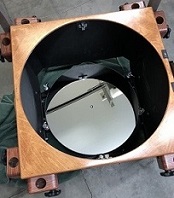
|
Thought you might like to see the results of my cleaning of the corrector plate of the 12-inch Meade Classic LX-200 which we will be using for our TESS TFOP SG-1 ground based photometry work. The results were spectacular!
I have included a few images of the before appearance and one of the finished result!
I am very happy with the results!! (And) I'm very happy about being able to finally get the optics clean again (and to) share my cleaning experience!
Myron Wasiuta,
Spotsylvania, VA USA
MSRO Science
& Mark Slade Remote Observatory
|
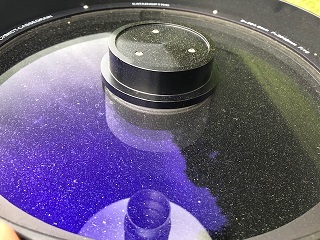
|
|
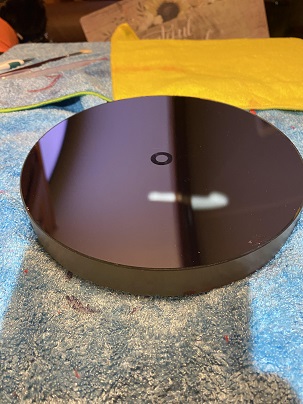
|
Amazing success! We were able to clean small, permanently mounted, curved mirrors in a compact setting extremely easily - and the results were stellar! Much better than we ever could have done with our old methods. We love the product!
Zack C., Department of Physics, Univ. of Virginia, Charlottesville USA
|
|
|
|
|
The camera sensor that I have never been able to get properly clean before now seems to be free of dust specks for the first time thanks to First Contact (ESD formula). - Chris, New Zealand
|
|
|
|
|
I had a very positive experience cleaning the primary mirror of my 14" Ritchey-Cretien telescope.
My observatory is surrounded by pine trees and the mirror was quite "dirty" with pollen and water spots. I initially tried a small area near the edge of the mirror to see if the polymer would remove the water spots,
but they persisted (the pollen and other contaminants were removed). So I then ordered the water spot treatment. Per the directions, I applied the water spot remover and the polymer and about
45 minutes later I had a clean mirror.
The instructions and videos were well done. I will use your products (and process) for future cleanings.
I've attached before and after photos. I apologize for the poor quality (I didn't plan on sharing them) but if you zoom in on the "before" image you can get a feel for how dirty the mirror was. All of the loose flocking
material and blue tape were temporarily installed to address a separate issue not related to cleaning the mirror.
Jeff Haidet, North Carolina, USA
|
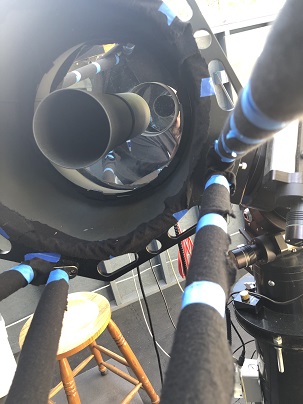
|
|
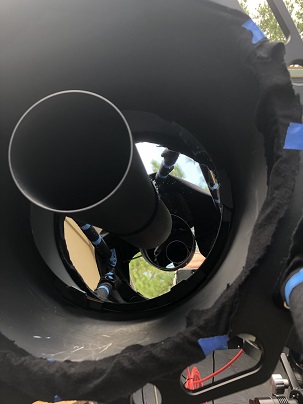
|
I cleaned my refractor right before a Star festival and was ecstatic with the results. I wished I could have done a second application to make the lens perfect but I did not have time. There were a couple smudges still left after the
first application but it was a vast improvement. I learned a little about the application process. I need to wait a little longer to ensure the edges completely dry. The liquid pooled on the edge of the curved lens making the edges a
little deeper and thus taking longer to dry. I was able to get all the polymer up with a little extra work. I have not yet tried to clean my filters. I needed to contact the manufacturer regarding the filters construction. So far I have heard
from only one. The Optolong filters have been confirmed to be optical glass. I am waiting on a response from ZWO regarding their filter. My filters were less of the an issue due to the fact they are deep in the optical train.
I am a satisfied customer and have been raving about First Contact Polymer to my Astrophotography friends.
I intend to do another application soon.
Thank you so much.
Rick Laird, Carlsbad, CA USA
|
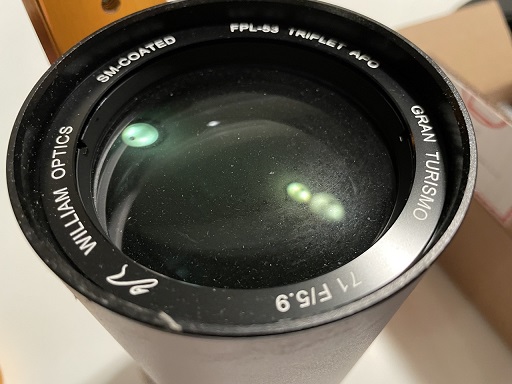
|
|
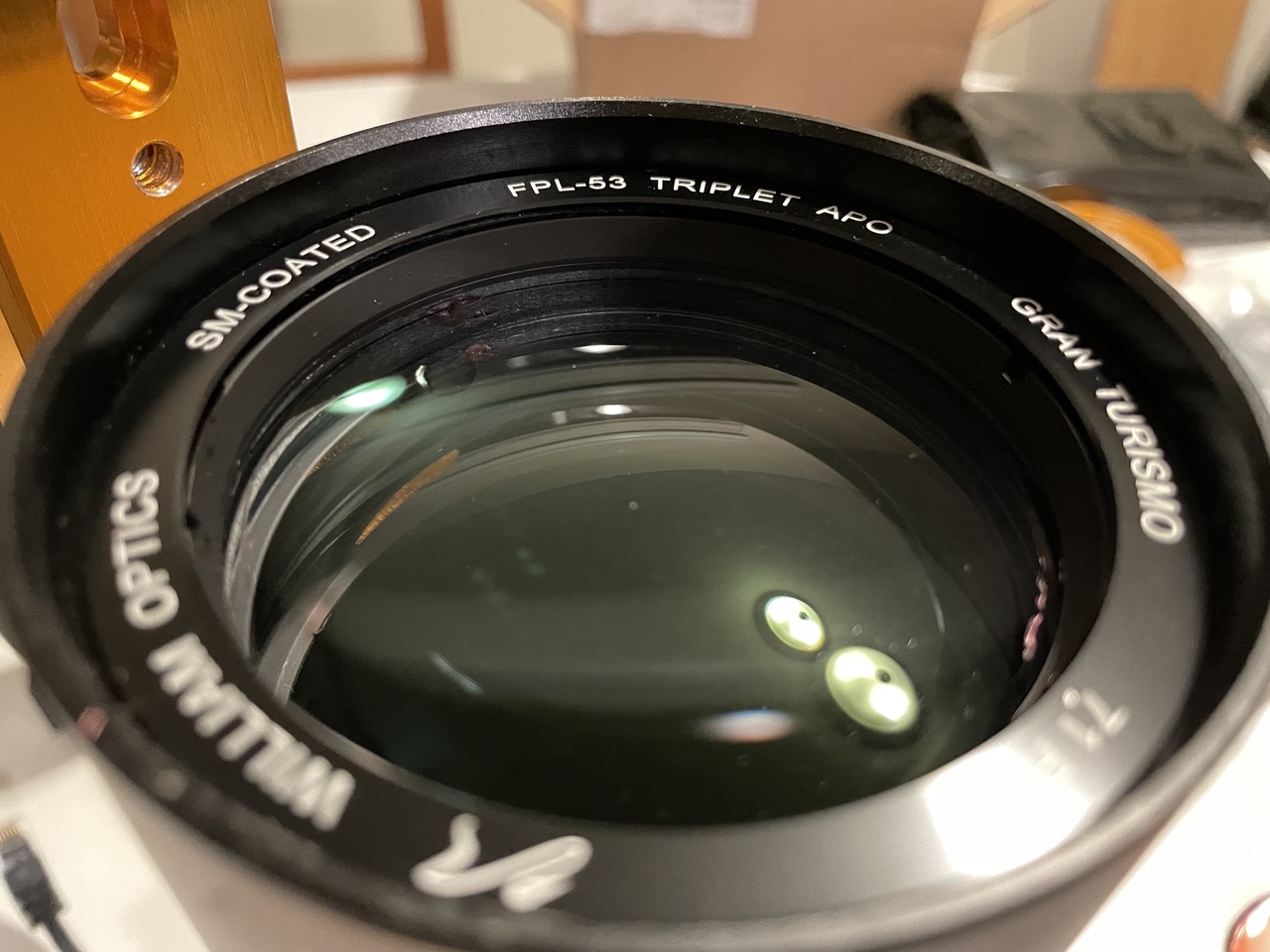
|
After all the angst surrounding the cleaning of my CDK17 telescope, I figure you'd enjoy a positive report: the 17" mirror has been peeled with zero residual polymer left behind. I very much appreciate your technique of "painting"
the perimeter of the mirror up to the aperture mask, then masking that area and spraying the overall mirror. I used the same technique at the center of the mirror, where some of the adhesive had oozed up between the baffle and
the mirror--the masking technique directly solved the problem of getting the polymer stuck to the adhesive.
I was able to peel using 1/2 of a sticky pad from the kit. There was a little over-spray issue that got under part of my masking--I painted on a stripe of the polymer and peeled the problem away. I was somewhat concerned with this
being my first use of First Contact--This was a textbook operation based directly on your guidance--thank you! I'll be moving on to lenses and filters--the polymer behaves exactly as described, so I am confident the remaining tasks
will work without incident. Many thanks for the excellent product and equally excellent support.
- John, OR, USA
|
|
|
|
I had been searching for about 6 months for ways to clean mirrors and lenses without damaging their coatings when I came across your product while doing an internet search. It is almost humorous that their is no consensus on
how and what to use to clean optics. Your product worked perfectly! Although I used it to clean many eyepieces and diagonals my primary use was to clean my 11" Celestron Edge HD Corrector Plate. After two years of use it was
in need of cleaning. I cleaned it in place without removing it in 4 sections allowing the polymer to dry for 45 minutes between application. As instructed "Thicker is better" and I soon learned how to best apply the polymer. For the
corrector plate I used a fine 3/4" brush I obtained from an art supply company. It worked very well and cleaned up nicely with acetone and ethanol. The only issues I had was when I applied it too thinly. When this happened I just
applied a thicker coat over it and let it dry and pulled the polymer off. I am very satisfied with this product.
- Kim, CA, USA
|
|
|
|
I have a remote observatory in the Patagonia mountains of southern Arizona. I also do some imaging out of my backyard in Tucson Arizona. I have a 130mm refractor in the observatory and 100mm refractor at home. I also
image with an 8" SCT. All of these need cleaning at one time or another. My 100mm refractor is my oldest and the most in need of cleaning. It is also my cheapest instrument, so it makes a good learning experience. Below
are images from my first cleaning. A before shot, objective with the polymer drying, a shot of my cleaning setup (the dew shield unscrews which made access easier) and an after shot that show how much cleaner my objective is.
I always approach cleaning optics with some trepidation. Will I be doing damage by cleaning? I will say this is the most confident I have ever been about cleaning my optics.
I am an astrophotographer. My images are at: https://www.astrobin.com/users/andrewjbarton/
- A. Barton, Tucson, AZ USA
|
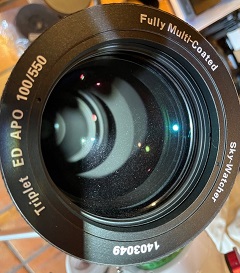
|
|
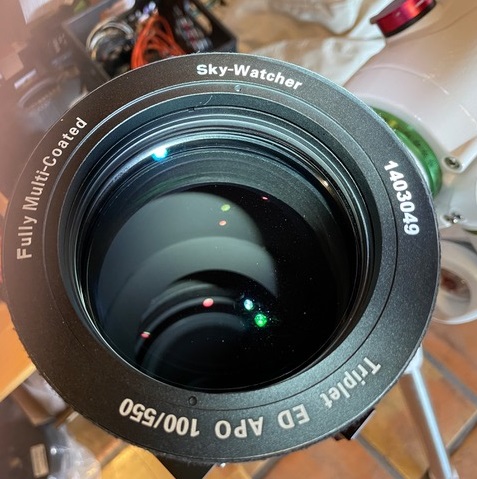
|
February, 2023: Here are some ancient photos from May of 2010 when I used the clear, spray (First Contact) polymer to clean my 17.5” primary mirror prior to attending a star party in Virginia. (We asked Jack if the polymer affected his collimation dot and this is his response): The collimation dot is a simple adhesive hole reinforcer that I placed on the mirror to aide in collimation. I am surprised it did not stick to the polymer sheet when I peeled the dried polymer film off the mirror. (Note from PCT: We can't guarantee a collimation dot won't be removed by First Contact so we suggest protecting it against possilbe removal unless you're adept at recollimation)
Jack H.
Pearl River, LA USA
|
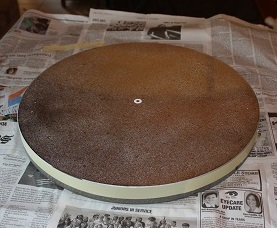
|
|
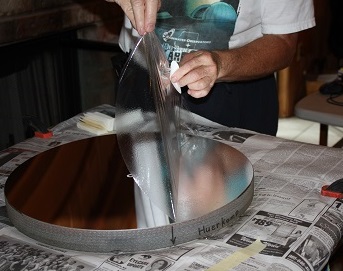
|
|
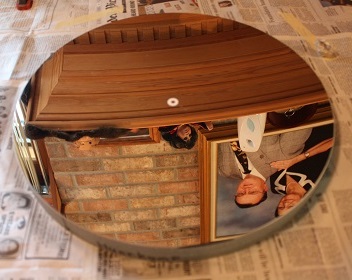
|
|
|
The polymer film worked great at stripping away all the stuck bug poop, pollen and tons of stuck on dust from my Astro-Tech 10" RC. The only problem during cleaning was a drop from the pipette would run down the mirror
concave surface when applied On reviewing after finished, my ambient conditions were around 90 degrees when I cleaned the mirror and my guess is the viscosity dropped due to the high temperature. I was not fast enough
at initial application and some polymer flowed under the vertical tube but I was able to use unwaxed floss to clean the polymer residue. For some reason one square inch area did not clean well on the mirror surface, so I spot
cleaned this area only with First Contact and was successful.
Peter L., Green Valley, AZ, USA
|
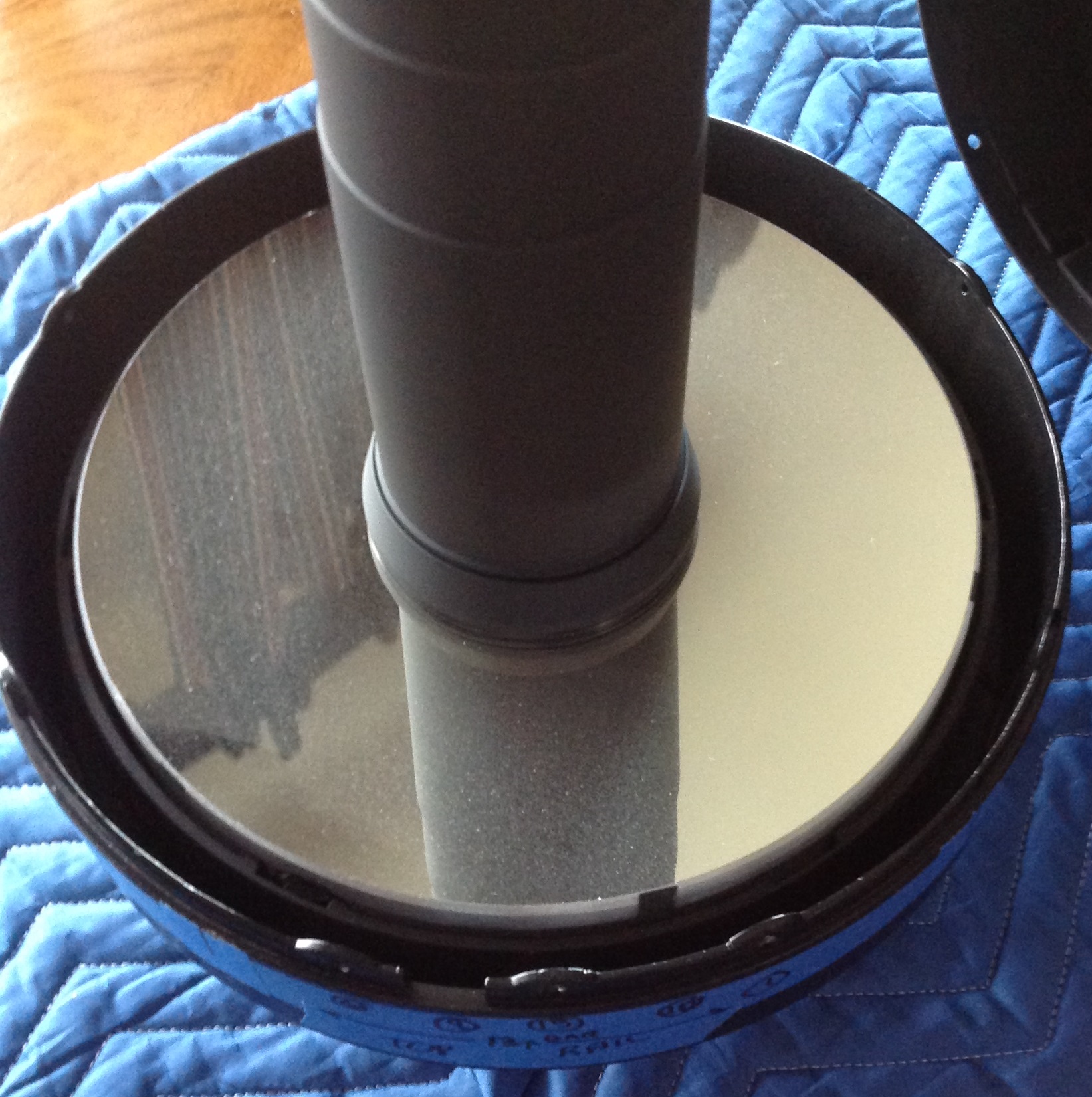
|
|
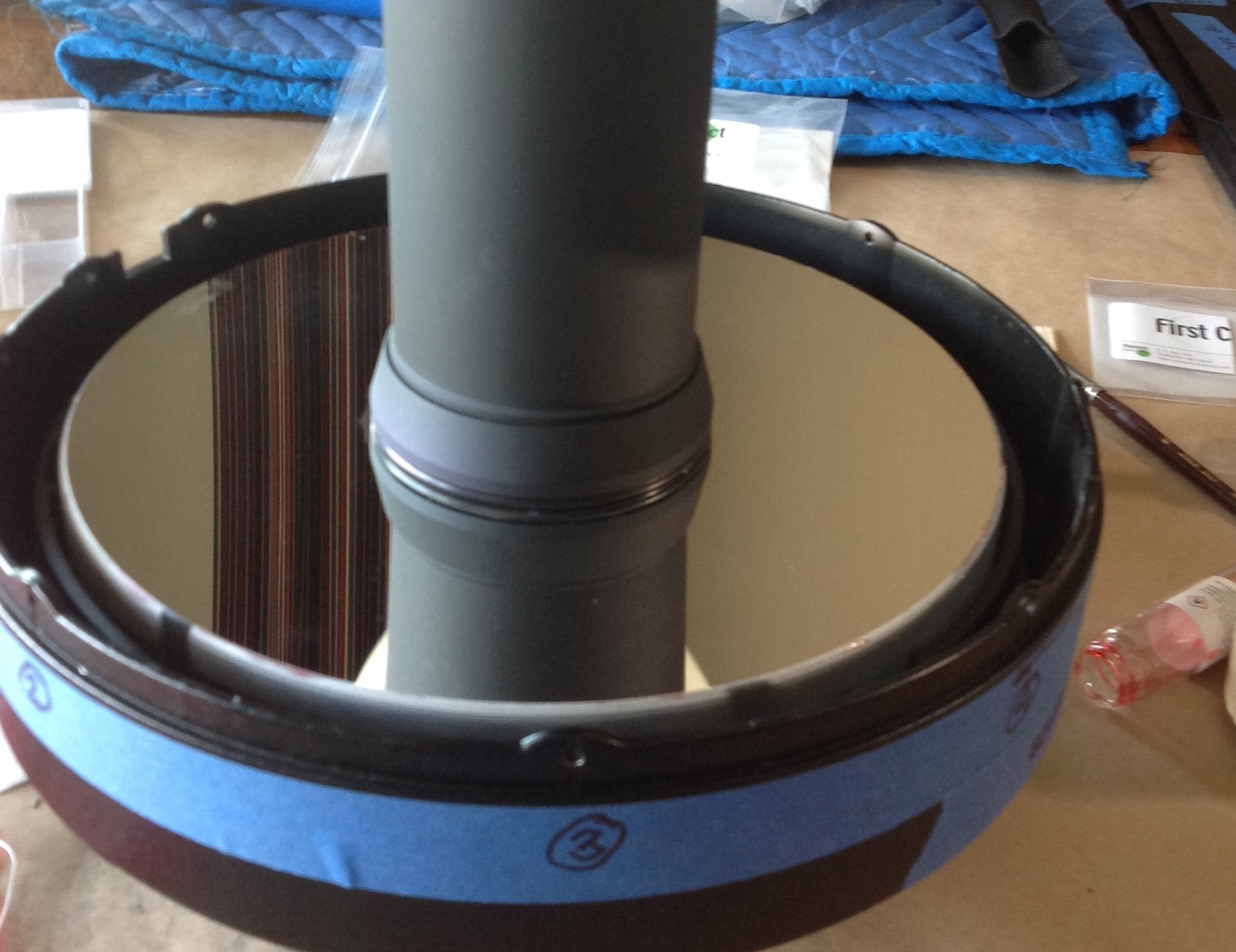
|
Excellent results! I just used your (First Contact Polymer) product on a Tak TOA130 objective and I could not be happier with the results.
Thank You. Rick D. Key Largo, FL USA
|
|
|
|
I used First Contact with the water spot remover on my Takahashi 130 and it worked fantastic! You really have one of those few products that are at the same time hard to believe yet it really does what you say it will.
- Mark, California, USA
|
|
|
|
WOW !! is all I can say. This product worked miracles on my very precious 16 inch F2.9 mirror. I've stored this scope in the garage and I looked at it last week and found something had made a home for itself- a squirrel or
mouse- in the scope rocker box. There were droppings and acorns and debris all about. And some had made their way onto the mirror surface thanks to air currents. I have another problem with Brown Marmorated Stink Bugs.
They crawled across my mirror this fall as well. When I tried to clean the mirror with a drop of soap and distilled water I always had blue streaks across the mirror's surface. Exactly as pictured after I washed it today.
I used the small bottle and 1 large bottle (of First Contact polymer) to cover the mirror, and let it set a good hour and a half. It was touch and go to get the film to lift at first- I carefully scored the beveled edge of the mirror
with a knife to loosed any overhanging film, and it slowly started to come up. Then it came off in one piece. I am amazed ! The mirror looks fantastic. I'm a very happy camper. I was resigned to having to live with those
streaks and never seeing my mirror as clean as the day it arrived. Now if I ever have that problem again, I'll know I can take care of it.
Michael O'Gara, New York USA
|
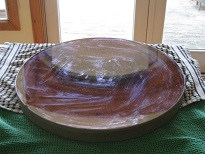
|
|
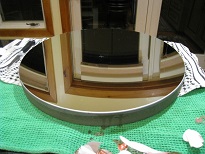
|
I just bought a Red First Contact Kit to see if I could clean a mirror diagonal I'd given up on cleaning. It took a few tries to get the right technique, but the results were wonderful. A mirror that I'd been ready to junk looked like it had just come from the vendor. Thanks for providing an excellent product in a small kit that and amateur astronomer can afford to buy.
You product has most certainly met and exceeded my expectations. I really can't speak too highly about First Contact Polymers.
Tim Cole,
Ontario, Canada
|
|
|
|
I was able to get the William Optics GT102 cleaned up. It ended up being a 3 step process. I used the polymer as directed. There was still a bit of gunk on the lens so I did a cleaning with a fluid and camera sensor swabs to get the rest off. This as usual left a bit of residue. So I performed another polymer application. The results were excellent with zero residue or dirt.
I am quite pleased with how it all turned out. The optics had been heavily used in my observatory for about 3 years. As you can see in the attached picture it was well overdue for some care
Thanks again! Chris F. | 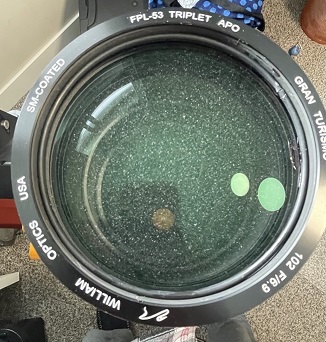 |
|
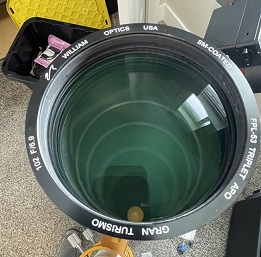 |